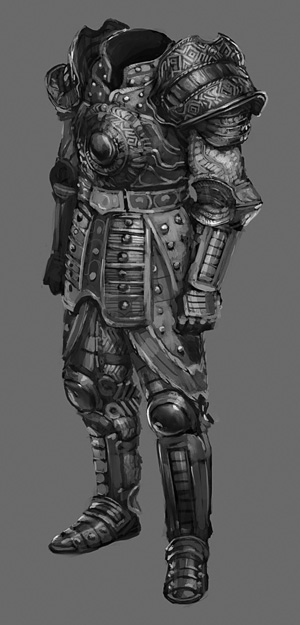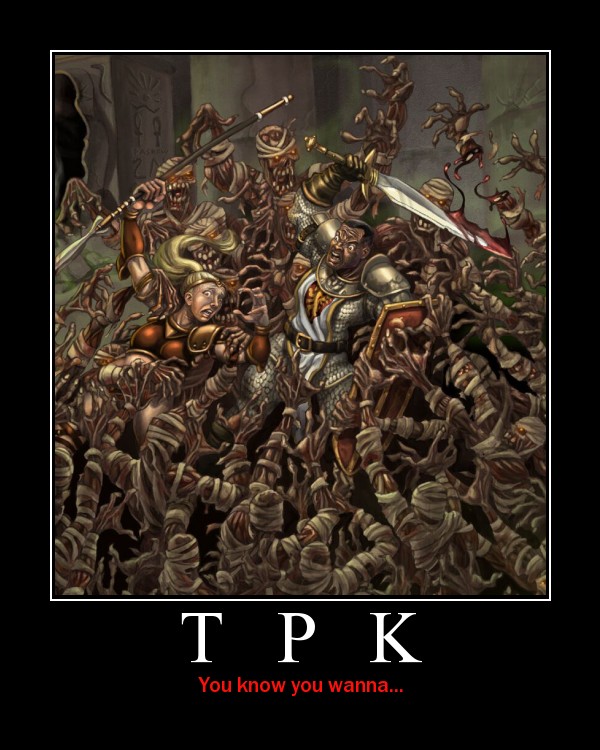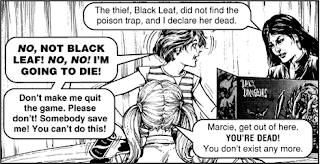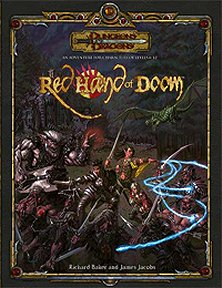Breaking Your Expectations and your Limits
 |
| Break free of what reality teaches! |
The first step to creating a believable fantasy world is to decide just what magic entails in your world, and what its limits are. Now in your standard, traditional D&D/Pathfinder game, where characters can reach high levels over the course of a campaign, and wield supreme magical powers and amass vast wealth, the resulting ripples in the world will be equally fantastic. So sit back, get comfortable, and remember you're not in Kansas anymore.
Magic Affects Technological Advancement
Magic is unlike anything we have ever had. It can literally create something from nothing, and produce seemingly infinite amounts of energy through the use of magical items. Magic is the most likely reason that modern weaponry is rarely present in fantasy games. Who needs a rocket launcher when you can take an arrow of detonation and fire it silently from a longbow from a thousand feet away, and engulf everything in a 20ft radius in a ball of fire? Necessity is the mother of invention, and a lot in the way of technological advancement in our world is not a necessity in a fantasy world, and in many cases it outright inferior. The evolution of design sparks off in a different direction. People don't create airplanes because you can just drink a potion and fly, or ride a griffen, pegasus, or other giant flying creature. Get the idea?
 |
| Everburning lanterns are all the rage. |
In my previous article, I noted that a local lord might commission continual flame street lights for his village/town/city/community so as to enhance the nightlife of his lands, cut down on crime, or just to show off to the other lords who still have dark streets at night or are using mundane fire to light their cities. This is a simple example of how the lives of people might be changed by the use of magic in fairly mundane ways.
Some Examples of Magical Technology in Fantasy Settings
Magic combined with science can create a lot of very, very impressive things. Stuff that utilizes heat and water, such as steam engines, would be exceptionally easy to produce using magic. A simple magic item that repeatedly casts burning hands inside a boiler that is filled with a repeating create water spell would be able to produce steam while being relatively small in size. Most importantly, unlike traditional steam engines, you wouldn't need a constant fuel source (such as coal or gas) with magic, as it magically produces this energy in a manner similar to some sort of self-recharging battery.
 |
| Yeah, it's kinda like that. |
Likewise, an electrical generator would be very easy to create. A simple shocking grasp at 5th caster level produces an amount of energy equivalent to about half a bolt of lightning (the environmental rules say that bolts of lightning from a thunderstorm have 4d8 to 10d8 worth of electricity damage, meaning that the average lightning bolt is about 31.5 points of damage assuming a 7d8 bolt of lightning). If that kind of power can be harnessed, you could easily create infinite generators of electrical power through the use of wondrous items.
 |
| Sir, the wyverns are approaching! |
 |
| This is how a multiclass fighter/wizard kicks butt in the sky. |
| Just beware of haunted ghost trains. |
 |
| Summoning Elementals atop the powerful Juggernaut! |
How Does Magic Affect Day to Day Life?
Well beyond merely the capacity that magic has for use in the realm of engineering, it can be used to make life better for everyone. The continual flame streetlights were one example of this. There are a lot of low-cost magic items that could affect the world in extreme ways. The most common would probably be the decanter of endless water, which can produce 18,000 gallons of water every hour, or 432,000 gallons of water per 24 hour day. Now to get an idea as to how that could affect life, let's take a moment to get an idea as to how much water that really is. There was a discussion on the Paizo Messageboards about this sort of thing, and here's a few excerpts on water usage.
Drinking eight 8oz glasses of water per day is a half a gallon. Which means that in a town of 1,000 people, they should consume about 500 gallons of water per day, just drinking. Now let's get an idea of how much water they might use if they had a running water supply, similar to today.So that gives you an idea as to how much water it would require just for drinking and bathing needs of people. Then the question of whether or not it could support agricultural growth came up. So the following was determined by the folks on the board, in terms of sheer quantity of water.
This source suggests the following consumptions.
Shower: 15-30 gallons
Brushing Teeth (water running): 1-2 gallons
Shaving (water running): 10-15 gallons
Washing Dishes by Hand: 20 gallons
Washing Dishes by Dishwasher: 9-12 gallons
Flushing Toilets: 5-7 gallons
Total: 86 gallons on the high side.
So our town's total intake of water if they were being wasteful with it would be 86,500 gallons, leaving a remainder of 346,000 gallons of water per day, which can be stockpiled in a reserve or similar, allowing a community to produce an excess of 10,380,000 gallons of water each month, or 124,560,000 more water than it takes to support the community each year.
Diego Rossi: "That is, a decanter set to geyser will pour enough water to feed 545 people if your aqueduct had 0 wastage. As modern aqueducts can have a 30% wastage, a decanter can produce enough water to raise the food for 380 people."Essentially, this means that with a few decanters of endless water, you could cultivate barren wastelands such as deserts, or better prepare yourself for droughts, where you could produce water on demand by activating your decanters and filling a reservoir. If your people were smart enough to establish fairly decent irrigation systems, you could distribute the water more effectively, make sure crops had water when and where they needed it, which results in using less water overall.
Ashiel: "Point taken. So if a village of 400 people produces 1500 gp for their local lord or state per month, it would take about five months to purchase a decanter of endless water that would produce enough water to feed most of the population, and the decanter could be crafted and completed within 9 days. With a year's investment, you could outright purchase two decanters to produce enough water to supply 760 people, or 360 more people than you need to supply. Resulting in excess water, and the option to begin expanding your community."
| Life giving water wherever you need it. |
To really put it into perspective, the state of California would not be what it is today if engineers didn't come up with a way to get water to it for agricultural purposes. The grand state that is the home of Hollywood, swimming pools and movie stars, wouldn't be what it is without water being brought from another location to California through a massive engineering project. You can find out all about it here. Here's an excerpt from the piece of history.
IT NEVER RAINS IN CALIFORNIA …..Likewise, spells like purify food and drink or prestidigitation can be crafted into magic items like traps that continuously activate in pipelines to clean water supplies, so that communities can dispose of waste efficiently, and even recycle their waste, making a magic-driven community more efficient and less pollutant than modern societies that struggle with purification, bi-products, and waste management runoff.
No other state has rearranged their environment to the same extent as California. The truth is, most of California is an arid semi-desert, with a climate similar to that of the North African Plain. Los Angeles is drier than Beirut. About 65 percent of the state receives less than 20 inches of rainfall per year, most of that in the winter months. While 70 percent of California’s runoff occurs north of Sacramento, 75 percent of California’s urban and agricultural demands are to the south.
Rain is a rarity here.
The abundant sunshine and mild temperatures of Central and Southern California are ideal for agriculture; the only ingredient missing is the rain. California’s rainfall is seasonal – dry during the hot summer months, and wet for only a few months in the winter. Still, California has more irrigated acreage than any other state, thanks to massive water projects started early in the twentieth century and still continuing today.
Magic really is a powerful force in fantasy. It makes the impossible possible.
So What's The Point...?
The point I'm making is that ultimately magic has the power to change the world, how the world works, and the limitations of that world. More than likely, it would. So when you're sitting down to play your favorite fantasy RPG, or write your next great campaign or adventure, give a thought to the kind of things that are actually possible for people to do. Don't feel inhibited by some strange notion that the world has to be like our reality in the 12th century AD or like our reality at all.
Let your imagination guide you.
 |
| It'll lead you to grand adventures if you let it. |












